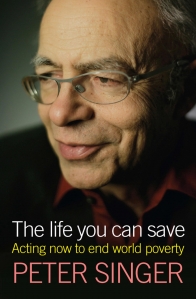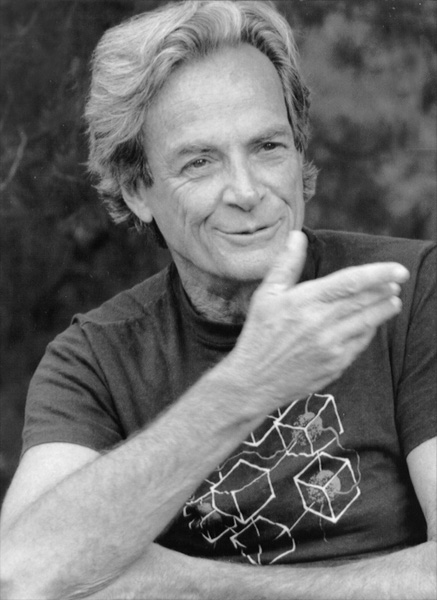I found this brief article at a site called Trojan Mice, which was linked to in a PLoS ONE article on the insane costs of cancer treatment.
One of the issues Fryer touches on near the end of this article is that complex adaptive systems theory is a model through which to view the world (one of many such models), but it was never designed to be predictive (which is what chaos theory tried to do with it). There are still a lot of people trying to use it to model outcomes instead of using it to understand how complex systems change and adapt.
This model is useful in more ways than I can offer, but I find it particularly relevant in conceptualizing abusive families, brain adaptations to trauma, the etiology of many "mental illnesses," and so on. No matter how dysfunctional the system at which we are looking, at some point its patterns were the best (or only) adaptation available given the environmental surround (people, objects, systems that are in place in a given environment, all of which impact the agents in that surround).
Anyway, this is one of the most concise overviews I have seen - and Fryer offers a great list of properties for complex adaptive systems.
A brief description of Complex Adaptive Systems and Complexity Theory
By Peter Fryer
Cause and Effect
For many years scientists saw the universe as a linear place. One where simple rules of cause and effect apply. They viewed the universe as big machine and thought that if they took the machine apart and understood the parts, then they would understand the whole. They also thought that the universe's components could be viewed as machines, believing that if we worked on the parts of these machines and made each part work better, then the whole would work better. Scientists believed the universe and everything in it could be predicted and controlled.
However hard they tried to find the missing components to complete the picture they failed. Despite using the most powerful computers in the world the weather remained unpredictable, despite intensive study and analysis ecosystems and immune systems did not behave as expected. But it was in the world of quantum physics that the strangest discoveries were being made and it was apparent that the very smallest sub nuclear particles were behaving according to a very different set of rules to cause and effect.
Complexity Theory
Gradually as scientists of all disciplines explored these phenomena a new theory emerged - complexity theory, A theory based on relationships, emergence, patterns and iterations. A theory that maintains that the universe is full of systems, weather systems, immune systems, social systems etc and that these systems are complex and constantly adapting to their environment. Hence complex adaptive systems.
Complex Adaptive Systems
These can be illustrated as in the following diagram.
The agents in the system are all the components of that system. For example the air and water molecules in a weather system, and flora and fauna in an ecosystem. These agents interact and connect with each other in unpredictable and unplanned ways. But from this mass of interactions regularities emerge and start to form a pattern which feeds back on the system and informs the interactions of the agents. For example in an ecosystem if a virus starts to deplete one species this results in a greater or lesser food supply for others in the system which affects their behaviour and their numbers. A period of flux occurs in all the populations in the system until a new balance is established.
For clarity, in the diagram above the regularities, pattern and feedback are shown outside the system but in reality they are all intrinsic parts of the system.
Properties
Complex adaptive systems have many properties and the most important are,
· Emergence: Rather than being planned or controlled the agents in the system interact in apparently random ways. From all these interactions patterns emerge which informs the behaviour of the agents within the system and the behaviour of the system itself. For example a termite hill is a wondrous piece of architecture with a maze of interconnecting passages, large caverns, ventilation tunnels and much more. Yet there is no grand plan, the hill just emerges as a result of the termites following a few simple local rules.
· Co-evolution: All systems exist within their own environment and they are also part of that environment. Therefore, as their environment changes they need to change to ensure best fit. But because they are part of their environment, when they change, they change their environment, and as it has changed they need to change again, and so it goes on as a constant process. ( Perhaps it should have been Darwin's "Theory of Co-evolution". )
Some people draw a distinction between complex adaptive systems and complex evolving systems. Where the former continuously adapt to the changes around them but do not learn from the process. And where the latter learn and evolve from each change enabling them to influence their environment, better predict likely changes in the future, and prepare for them accordingly.
· Sub optimal: A complex adaptive systems does not have to be perfect in order for it to thrive within its environment. It only has to be slightly better than its competitors and any energy used on being better than that is wasted energy. A complex adaptive systems once it has reached the state of being good enough will trade off increased efficiency every time in favour of greater effectiveness.
· Requisite Variety: The greater the variety within the system the stronger it is. In fact ambiguity and paradox abound in complex adaptive systems which use contradictions to create new possibilities to co-evolve with their environment. Democracy is a good example in that its strength is derived from its tolerance and even insistence in a variety of political perspectives.
· Connectivity: The ways in which the agents in a system connect and relate to one another is critical to the survival of the system, because it is from these connections that the patterns are formed and the feedback disseminated. The relationships between the agents are generally more important than the agents themselves.
· Simple Rules: Complex adaptive systems are not complicated. The emerging patterns may have a rich variety, but like a kaleidoscope the rules governing the function of the system are quite simple. A classic example is that all the water systems in the world, all the streams, rivers, lakes, oceans, waterfalls etc with their infinite beauty, power and variety are governed by the simple principle that water finds its own level.
· Iteration: Small changes in the initial conditions of the system can have significant effects after they have passed through the emergence - feedback loop a few times (often referred to as the butterfly effect). A rolling snowball for example gains on each roll much more snow than it did on the previous roll and very soon a fist sized snowball becomes a giant one.
· Self Organising: There is no hierarchy of command and control in a complex adaptive system. There is no planning or managing, but there is a constant re-organising to find the best fit with the environment. A classic example is that if one were to take any western town and add up all the food in the shops and divide by the number of people in the town there will be near enough two weeks supply of food, but there is no food plan, food manager or any other formal controlling process. The system is continually self organising through the process of emergence and feedback.
· Edge of Chaos: Complexity theory is not the same as chaos theory, which is derived from mathematics. But chaos does have a place in complexity theory in that systems exist on a spectrum ranging from equilibrium to chaos. A system in equilibrium does not have the internal dynamics to enable it to respond to its environment and will slowly (or quickly) die. A system in chaos ceases to function as a system. The most productive state to be in is at the edge of chaos where there is maximum variety and creativity, leading to new possibilities.
· Nested Systems: Most systems are nested within other systems and many systems are systems of smaller systems. If we take the example in self organising above and consider a food shop. The shop is itself a system with its staff, customers, suppliers, and neighbours. It also belongs the food system of that town and the larger food system of that country. It belongs to the retail system locally and nationally and the economy system locally and nationally, and probably many more. Therefore it is part of many different systems most of which are themselves part of other systems.
Complex adaptive systems are all around us. Most things we take for granted are complex adaptive systems, and the agents in every system exist and behave in total ignorance of the concept but that does not impede their contribution to the system. Complex Adaptive Systems are a model for thinking about the world around us not a model for predicting what will happen. I have found that in nearly all situations I can view what is happening in Complex Adaptive Systems terms and that this opens up a variety of new options which give me more choice and more freedom.
.jpg)















